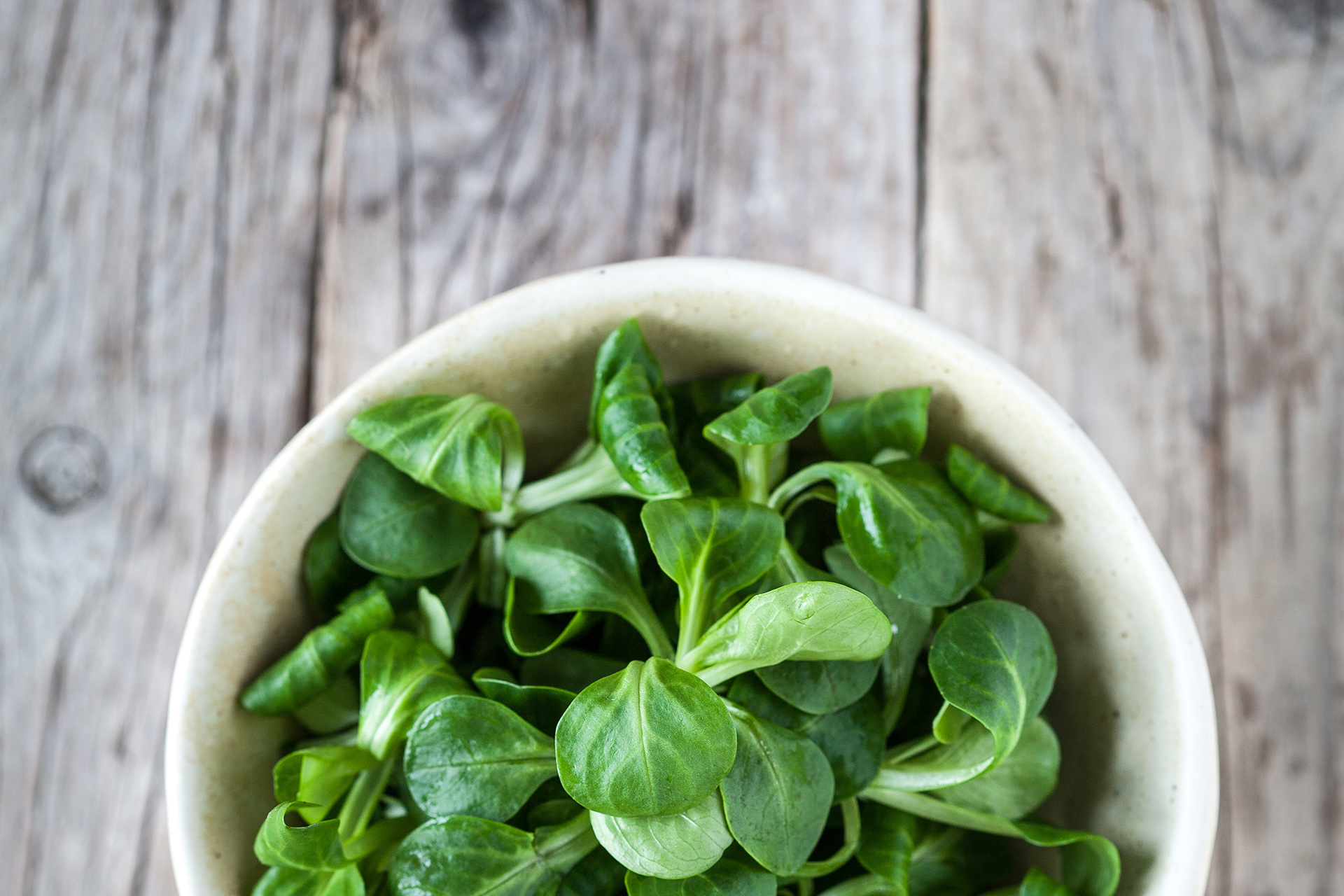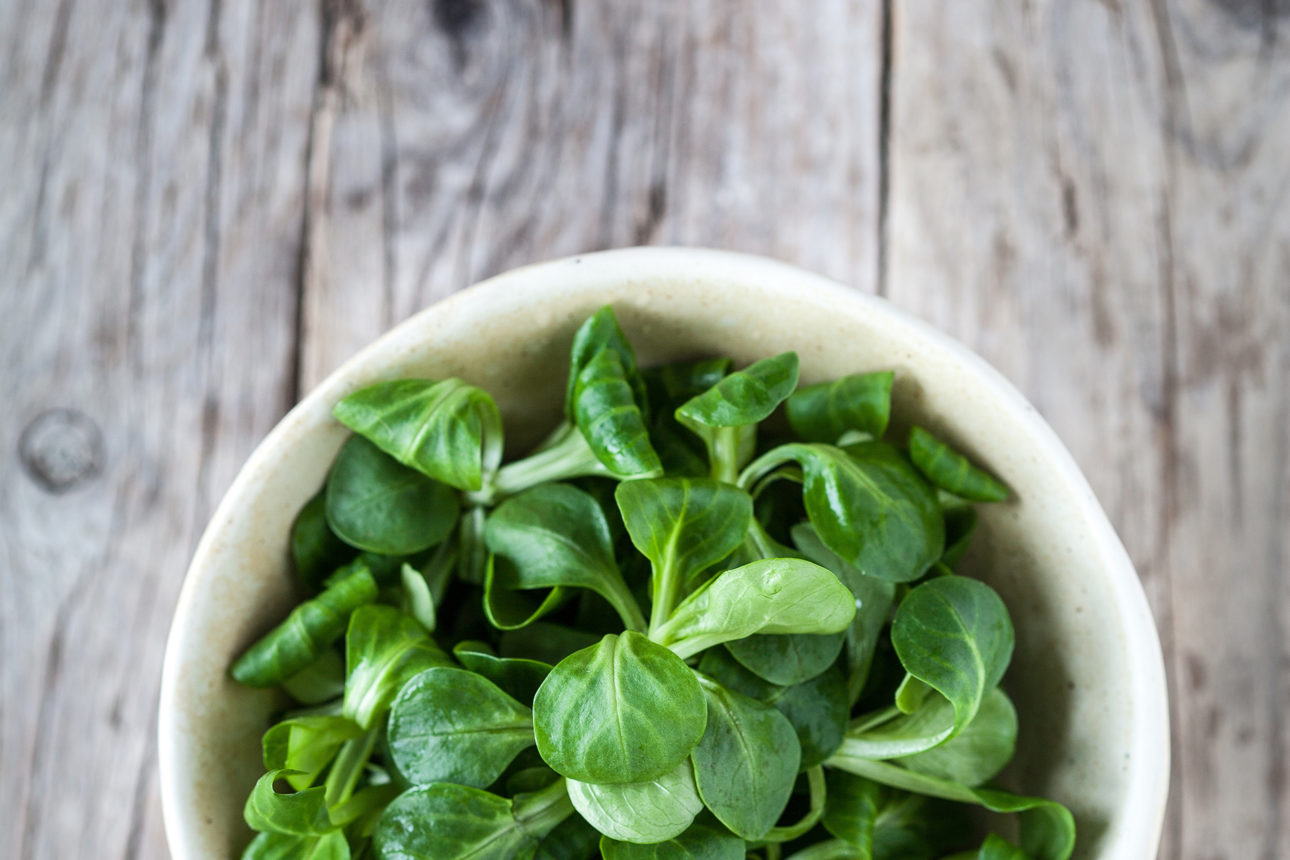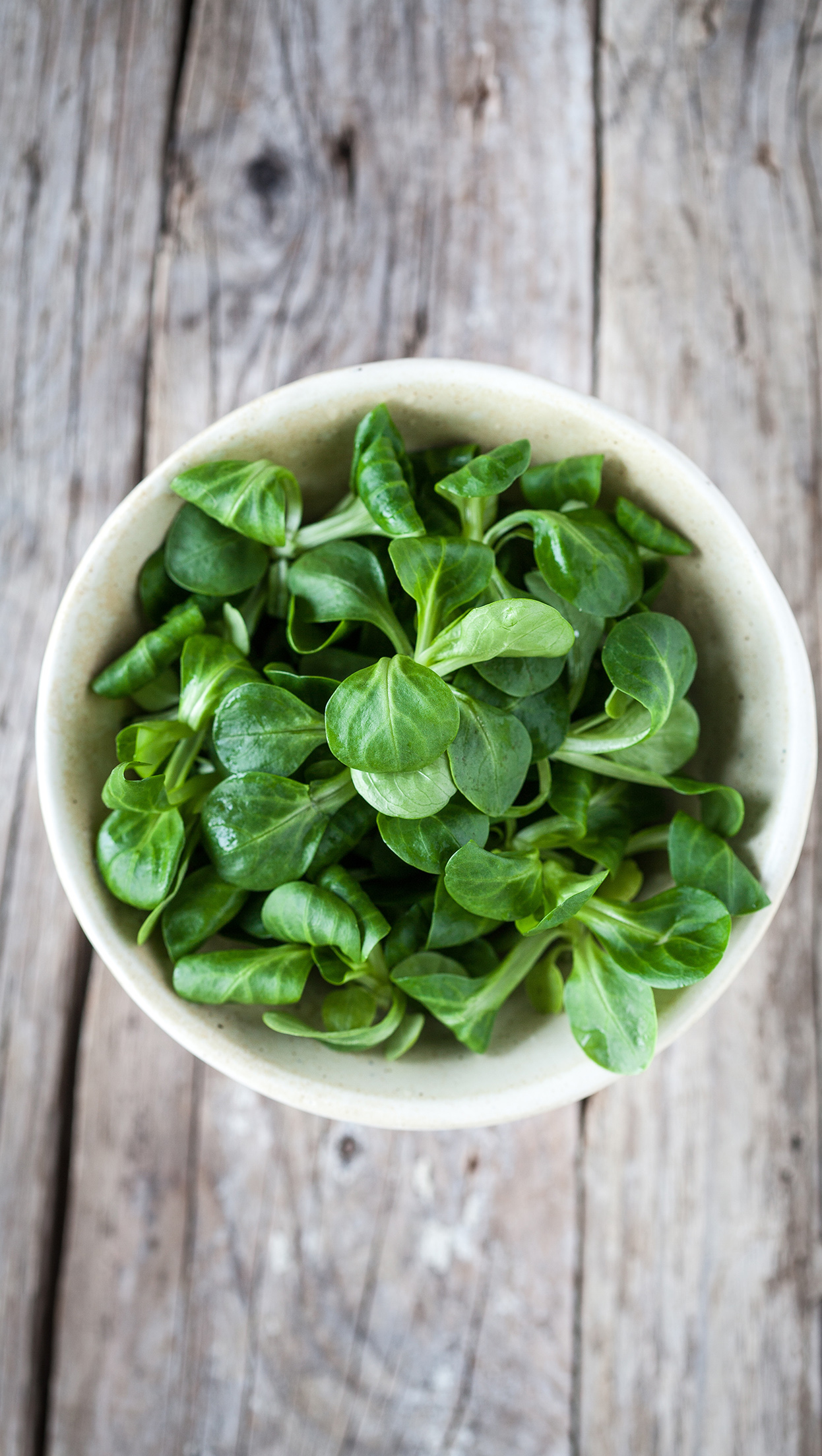
Lamb’s lettuce is perfect for a refreshing summer salad. Try with golden apples and walnuts.
Origin
The scientific name of lamb’s lettuce is Valerianella locusta, but it also goes by names such as corn salad, mâche, nut lettuce, field salad, and rapunzel. Very little is known about the origins of this plant, but some studies suggest it was originally from Sicily and Sardinia and later spread through Europe. Lamb’s lettuce belongs to the Valerianella family, and is a leafy green plant that grows wild in fields and sandy soil, and is also cultivated as a crop. The hearty, bright green leaves are eaten, while any yellow or wilted leaves are discarded. It’s important not to confuse lamb’s lettuce with another herb with a similar scientific name Valeriana Officinalis, which is used in herbal therapy as a sedative and anti-anxiety compound. Lamb’s lettuce has white or blue flowers, and its small, firm, oval shaped leaves grow in a rosebud formation. It’s planted in winter and its flowers floom in the springtime.
Cook It
It’s generally recommended to eat lamb’s lettuce raw, because its delicate leaves wilt very quickly when exposed to heat. It’s ideal as a salad at the end of a meal to cleanse the palate. Lamb’s lettuce goes well in salads with walnuts or fruit, such as slightly tart golden apples, orange slices or pineapple. Or as an alternative to the usual salad, try a tasty puree made with potatoes and lamb’s lettuce, or lamb’s lettuce pesto as a dressing. To mark the arrival of summer, Michelin starred chef Cristina Bowerman created a simple dish where it was the main ingredient: pureed lamb’s lettuce, avocado and lemon cream — a dish that even a non-expert could recreate. These simple ingredients are combined by smashing and thinly slicing the avocado, topping it with a lamb’s lettuce coulis, and drizzled with lemon cream and sesame seeds. Serve with warm pita bread.
Did you Know That?
Lamb’s lettuce is very common on Italian tables. It’s fairly low in calories, rich in fiber, vitamins and minerals, and helps prevent anemia and hardening of the arteries. Thanks to its ability to strengthen blood vessels and help circulation, it helps prevent cardiovascular disease. These heart healthy benefits come down to the presence of vitamin B. Among the other benefits of lamb’s lettuce, it is refreshing and can help with the digestion of fatty foods, which is why it’s often served at the end of a meal. In addition, this is a low calorie vegetable, with just 20 calories per 100 grams.




